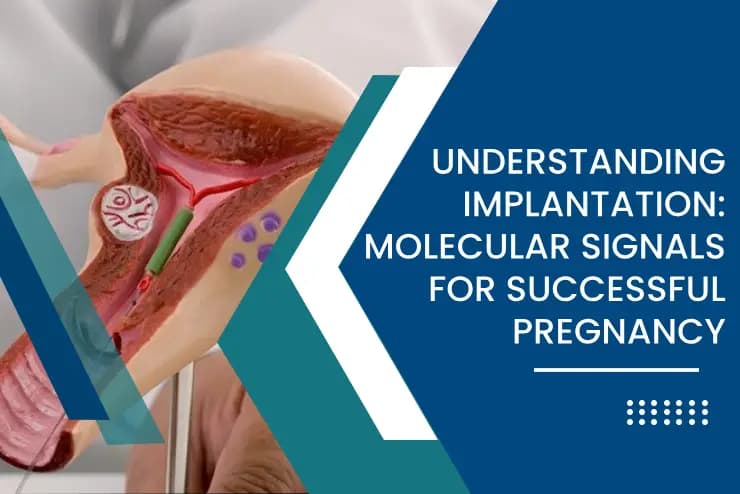
Understanding Implantation: Molecular Signals for Successful Pregnancy
For students studying embryology, understanding the process of implantation, the moment when the embryo attaches itself to the mother's uterus, is crucial. Implantation is a key step that determines whether a pregnancy can begin and be maintained. This process is carefully controlled by many molecular signals exchanged between the embryo and the mother’s uterus. Let’s explore this fascinating molecular dialogue in simple terms that help learners grasp how successful pregnancy begins.
What Is Implantation?
Implantation happens about 6 to 10 days after fertilization when the blastocyst—a ball of cells formed from the fertilized egg—attaches to the lining of the uterus (the endometrium). But it’s not just a simple sticking process. It involves a highly coordinated conversation between the embryo and uterus, regulated by hormones, proteins, and signaling molecules, to create a welcoming environment.
The “Window of Implantation”
The uterus is only receptive, or ready, to accept the embryo during a short time called the “window of implantation.” If the blastocyst does not arrive and attach during this time, implantation will fail. This timing is controlled mainly by the mother’s hormones—estrogen and progesterone—which prepare the uterine lining to be just right for the embryo.
The success of implantation depends on the molecular signals sent back and forth between the embryo and the uterine lining. These signals include:
-
Cytokines and Growth Factors: Proteins that act like messengers. For example, Leukemia Inhibitory Factor (LIF) is essential for preparing the uterine lining for implantation.
-
Heparin-Binding Epidermal Growth Factor (HB-EGF): Helps both the uterus and the blastocyst communicate. It encourages the embryo to grow and become sticky enough to attach firmly.
-
Integrins and Proteoglycans: Molecules on the surface of uterine and embryo cells that help them stick to each other. Think of them like Velcro helping the blastocyst stick to the uterine wall.
-
Wnt Signaling Pathway: A complex cell communication system that helps regulate cell growth and differentiation, important for both uterine preparation and embryonic development.
-
Immune Modulators: Because the embryo is partly genetically different from the mother, the uterus sends signals to reduce immune reactions, allowing the embryo to implant without being attacked.
How Implantation Happens at the Molecular Level
-
Apposition: The blastocyst aligns itself close to the uterine lining, guided by chemical signals, making the uterus sticky in specific areas.
-
Adhesion: Surface molecules like integrins allow the blastocyst to stick more firmly to the uterine cells.
-
Invasion: The outer cells of the blastocyst (trophoblast cells) begin to grow into the uterine tissue. Molecular signals trigger these cells to break down the uterine lining slightly, allowing the embryo to embed securely.
-
Decidualization: The uterine lining transforms to support the embryo by increasing blood flow and releasing substances that help the embryo grow and avoid immune rejection.
Why Molecular Signaling Matters in Embryology and ART
In assisted reproductive technology (ART), failure of implantation is a major reason treatments like IVF may not succeed. Understanding the molecular signals allows embryologists and doctors to:
-
Improve culture conditions for embryos to develop implantation competency.
-
Time embryo transfer to match the uterus’s receptive period.
-
Develop treatments to enhance uterine receptivity or correct implantation problems.
Current research uses animal models and genetic studies to unravel the detailed roles of different molecules in implantation, aiming to increase pregnancy rates and reduce infertility.
Summary
For embryology students, knowing that implantation is not just physical attachment but a complex molecular conversation between embryo and uterus is foundational. Hormones, growth factors, proteins, and immune signals work together during a short “window of implantation” to allow the embryo to embed safely and start growing.
This molecular dialogue ensures that pregnancy can begin successfully, making implantation a critical focus in both research and clinical practice for improving fertility treatments.
Content Created By:

CyberBizz Technologies
Team - Content Curator


